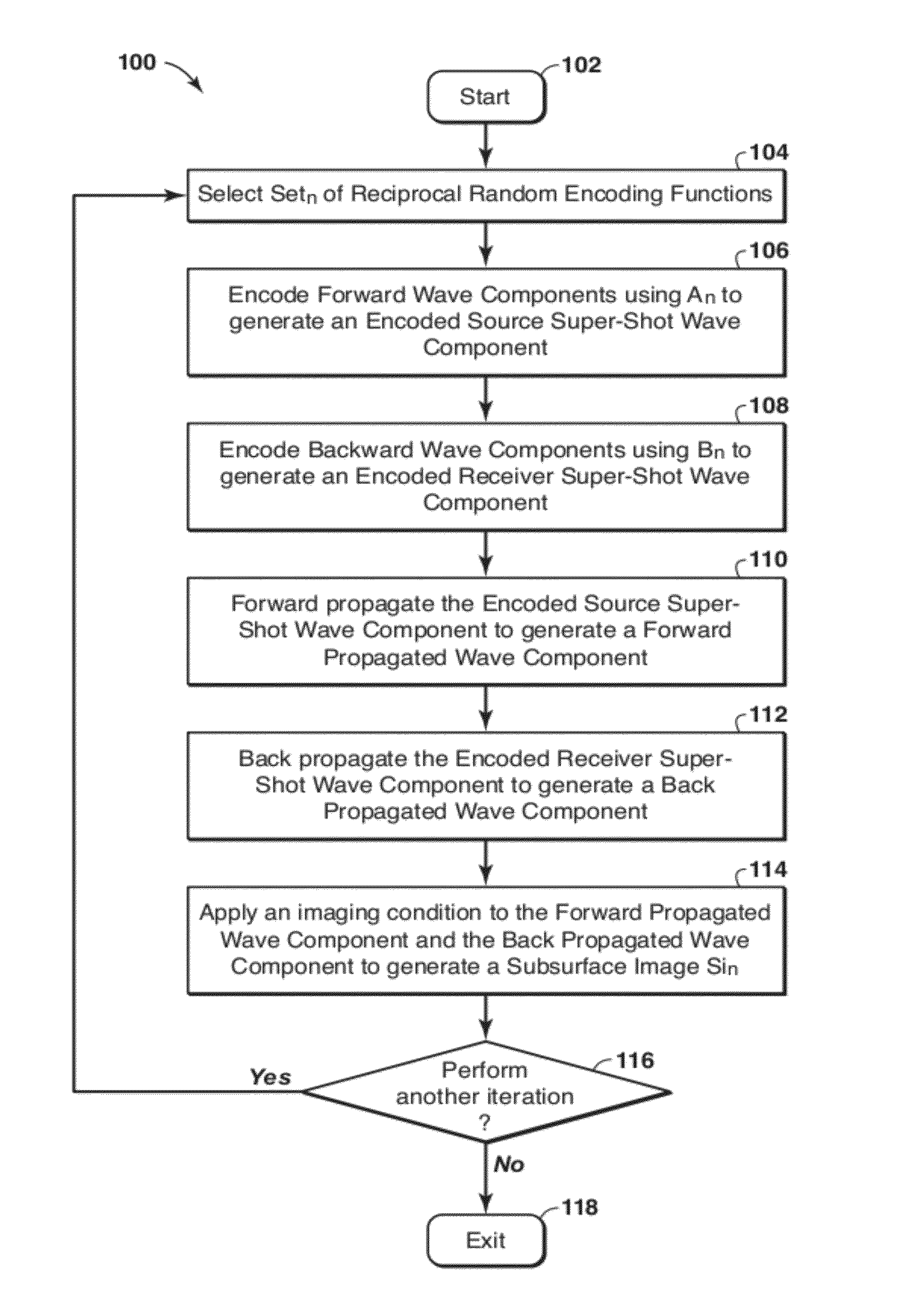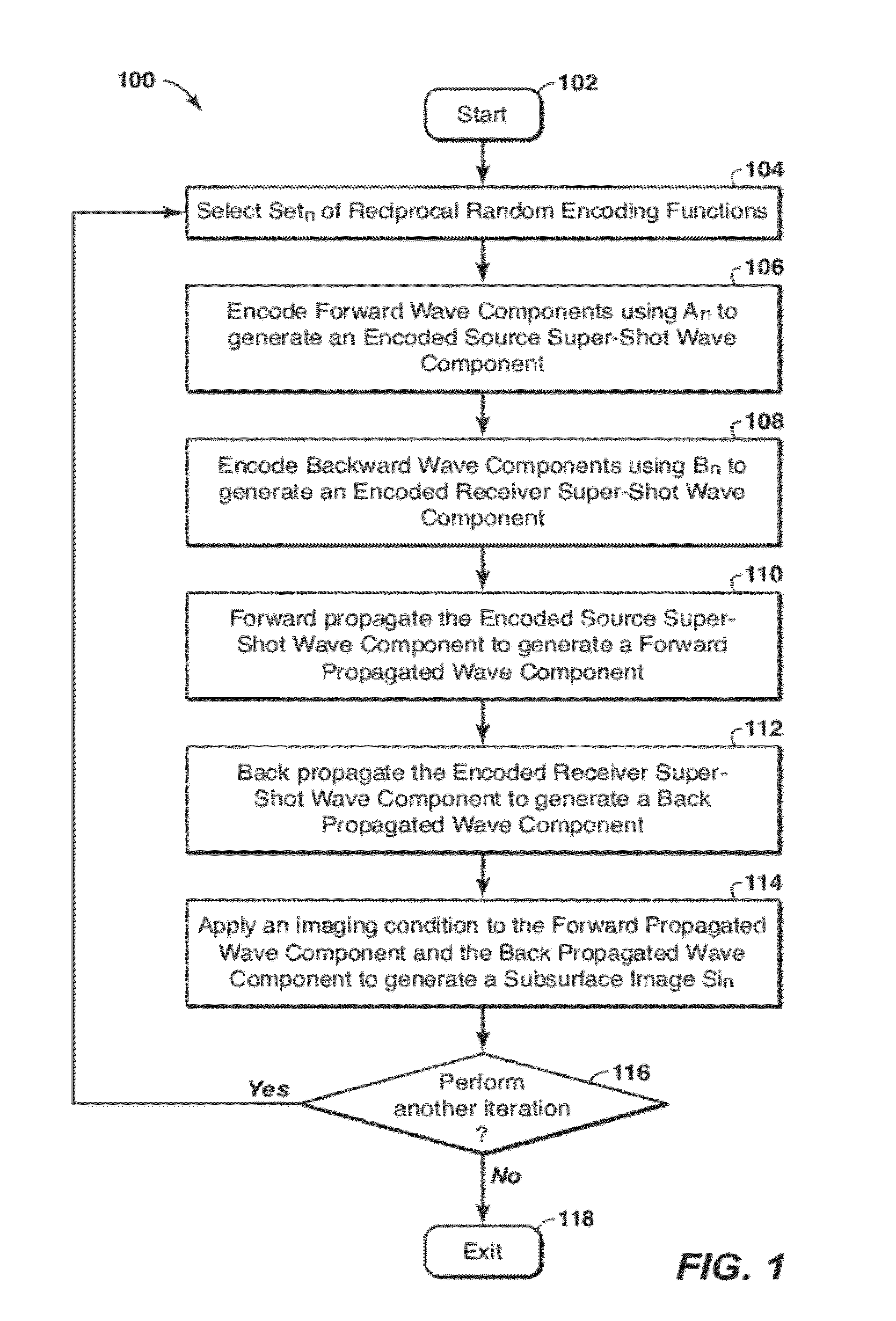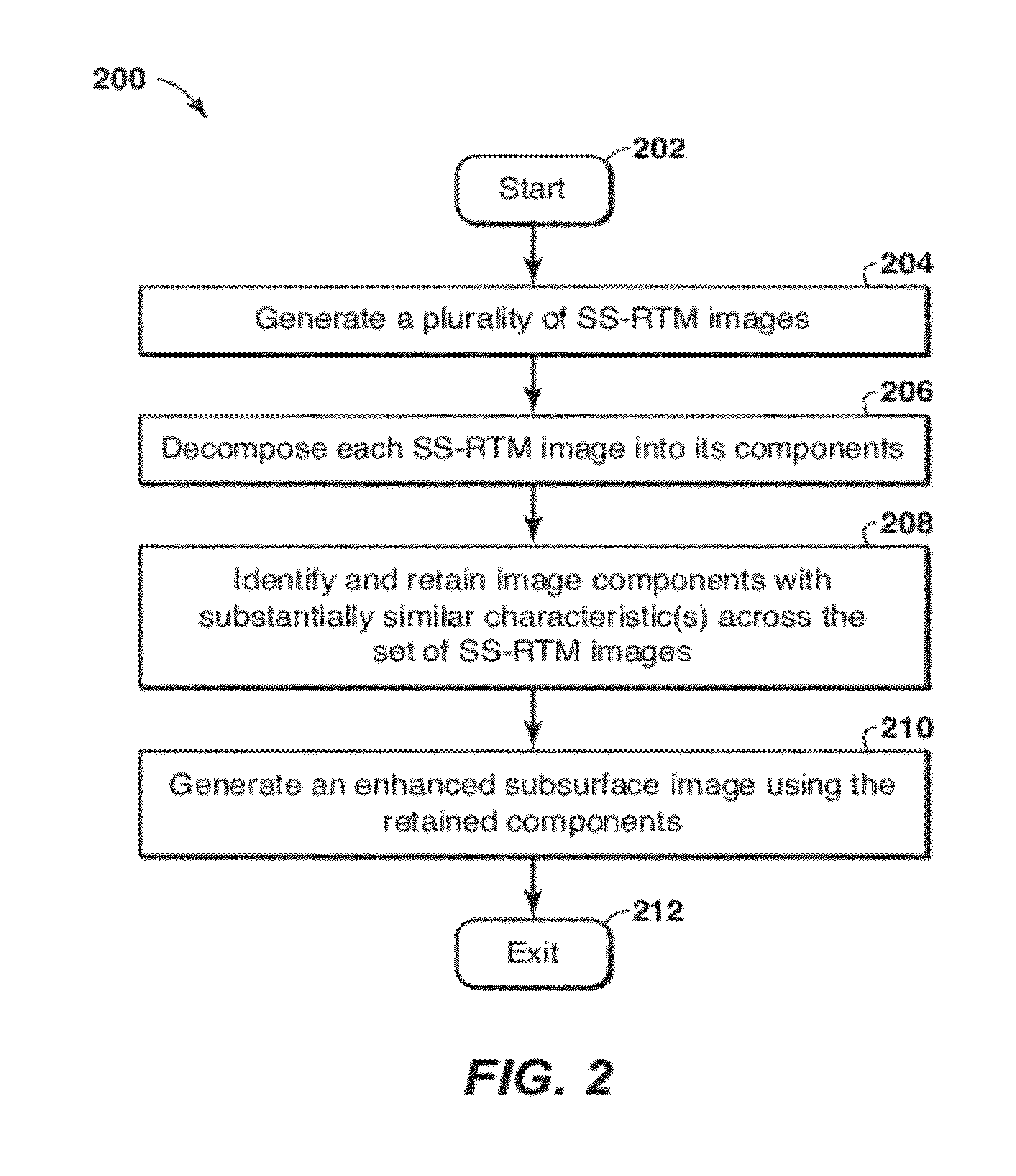Seismic Data Processing
a seismic data and processing technology, applied in the field of seismic data processing, can solve the problems of distorted view of the subsurface geology, confusing proper interpretation of seismic data, and much more expensive computation, and achieve the effect of enhancing the gradien
- Summary
- Abstract
- Description
- Claims
- Application Information
AI Technical Summary
Benefits of technology
Problems solved by technology
Method used
Image
Examples
Embodiment Construction
Definitions
[0018]Various terms as used herein are defined below. To the extent a term used in a claim is not defined below, it should be given the definition persons in the pertinent art have given that term.
[0019]As used herein, the “a” or “an” entity refers to one or more of that entity. As such, the terms “a” (or “an”), “one or more”, and “at least one” can be used interchangeably herein unless a limit is specifically stated.
[0020]As used herein, the terms “comprising,”“comprises,”“comprised,” and “comprise” are open-ended transition terms used to transition from a subject recited before the term to one or more elements recited after the term, where the element or elements listed after the transition term are not necessarily the only elements that make up of the subject.
[0021]As used herein, the terms “containing,”“contains,” and “contain” have the same open-ended meaning as “comprising,”“comprises,” and “comprise.”
[0022]As used herein, the term “exemplary” means “serving as an e...
PUM
 Login to View More
Login to View More Abstract
Description
Claims
Application Information
 Login to View More
Login to View More - R&D
- Intellectual Property
- Life Sciences
- Materials
- Tech Scout
- Unparalleled Data Quality
- Higher Quality Content
- 60% Fewer Hallucinations
Browse by: Latest US Patents, China's latest patents, Technical Efficacy Thesaurus, Application Domain, Technology Topic, Popular Technical Reports.
© 2025 PatSnap. All rights reserved.Legal|Privacy policy|Modern Slavery Act Transparency Statement|Sitemap|About US| Contact US: help@patsnap.com



